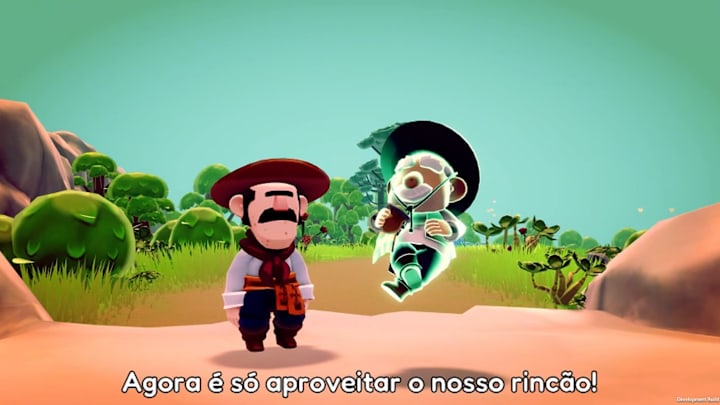Recently, I was presented with the opportunity to play through a charming farming sim that came out earlier this year. I was very excited, especially since I had been looking for a new one to play. I had played Stardew Valley for years, but started to feel burnt out on it. Farming sims have exploded over the last decade or so, and while there are true gems within the genre, it's hard not to struggle with that feeling of oversaturation and the desire for something new and refreshing. So, when I was presented with Gaucho and the Grassland and looked over the Steam page, I realized that this was just that refreshing, cozy diamond in the rough I had been looking for.
Developed by Epopeia Games, it has slowly but surely become a standout, being heavily inspired by Latin culture in story, environment, and music. With unique gameplay that veers off from the stereotypical Farming Sim standard, this game is a peaceful experience that resonates with what most fans of this genre seek—time for ourselves and discovering our roots.
The game starts with a quote, which feels very relevant as you play through it:
"Traditions are not explained, they are felt."Author Unknown.
We begin by making our own Gaucho, or Goucha, depending on the gender you play as. After going through character creation, as well as customizing your two companions, Cusco the dog, and Pingo the horse, the story begins. Your father has unfortunately passed away, but his spirit returns to speak to you! He tells you that it is now your job to continue running the farm and protecting the grasslands under the role of Guardian by restoring harmony between both the magical and the mortal realm.
From there, the story remains fairly simple, but not dull. There are three regions to explore, all of which are being terrorized by a serpent named Boitatá, a fiery serpent blocking our passage into the Realm of the Guardians. Each fight with Boitatá is roughly the same, with us having to repair beacons to banish the serpent after finding them inside a maze, with the number of beacons increasing and the maze itself getting bigger every time. After Boitatá is banished, a Fig Tree spawns in its place, allowing us access to the Realm of the Guardians. This is where the uniqueness of each area really stands out.
For example, one realm is plagued by a constant rainstorm. After meeting with the Guardian, you realize that his Yerba Mate drink had been stolen, causing him to unleash his wrath through the weather. You get the drink back by answering three questions from the thief, all based on different cultural stories and myths, which you can learn from speaking to the locals. As mentioned before, Gaucho pulls heavily from Latin and, specifically, Brazilian culture and mythology. The game wears its heart on its sleeve in this way and adds to the cozy and warm charm that the game already gave off. It also helps to make sure each area feels special and distinct from the others.
This is not to say that the game is without its faults, as with most games. The quests can sometimes be unclear and buggy. There was a quest in the Rolling Highlands I had where I had to return a herd of cattle to a ranch, and even after I did, it took several minutes before it would update, allowing me to turn the quest in. Also, the final boss fight threw me right in without a flicker of what I was supposed to do, and it left me feeling frustrated at the beginning, even if it was short-lived.
On a wider scope, the gameplay itself is enjoyable. A large majority of the mechanics focus on ranching and animal herding. You collect eggs, milk cows, and shear sheep for their materials, managing your resources as you trade them for items and turn them in for quests. I loved this aspect, as animal care and ranching seem to fall more to the wayside in Farming Sims as opposed to farming crops. However, this can be repetitive at times, and I did find myself getting bored now and again. However, Gaucho prides itself on being a slow and meaningful experience. More quests unlock after you complete a region, giving you the option of continuing the story or taking your time, discovering and completing new quests, or even decorating the empty land plots scattered around, available for purchase. It even encourages this, with the rewards for completing quests being crafting recipes for buildings, structures, and furniture.
The game also has no time system, something common in games like Stardew Valley and other farming sim staples, really urging the player to stay in the moment and choose what they would like to do rather than feel pressured to make the most of the time left in the day. If you're a completionist, this game has a large number of achievements, and a handful of them can be earned during the main story. Gaucho also lets you pick up immediately after the final boss fight, allowing you to pick up whatever loose ends you might have left. Trust me, I will be going for all achievements, too!
In conclusion, Gaucho and the Grassland is a love letter to the untouched well of Latin culture and the stories it can tell through farming sims and resource management! The game opens by telling us that traditions are felt rather than explained, and this game showcases what happens when those passionate about traditions come together to bring them to life for new audiences and what happens when others are ready to come together and listen.
